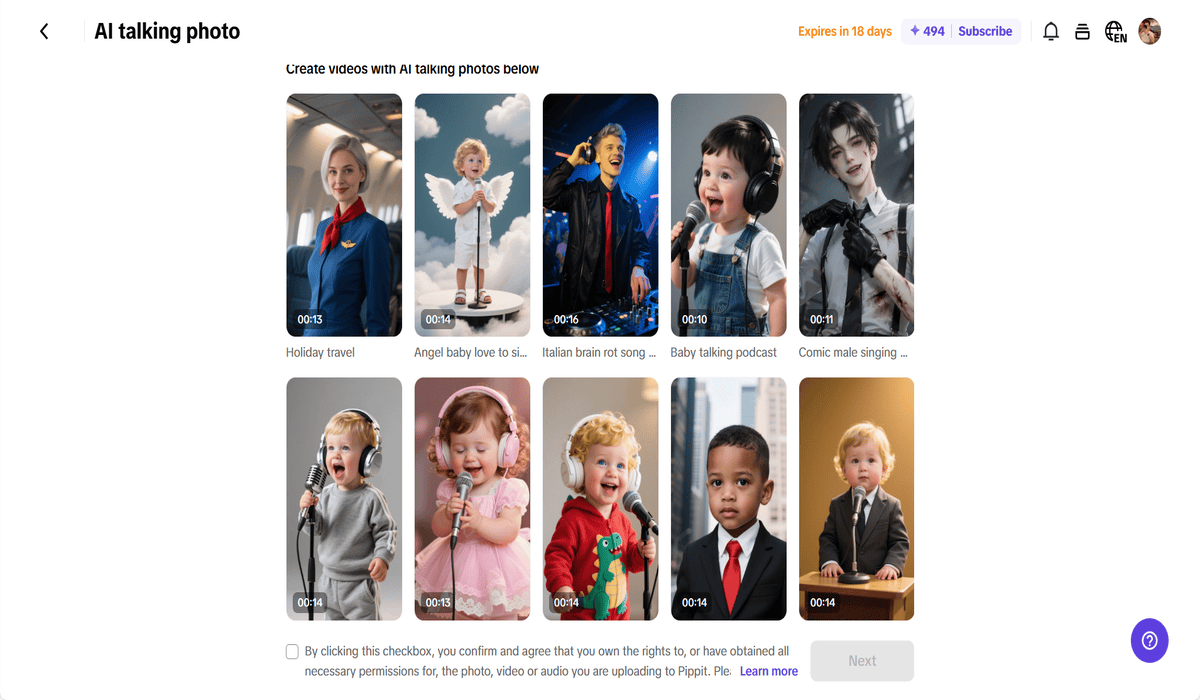Table of Contents
Laughter is universal. Until it isn’t. A local audience is laughing and snickering at your pun-filled product advertisement. Halfway around the world, it is greeted with perplexity and crickets the next day. More than nearly any other kind of communication, humor has its roots in chaos, culture, and context. Because of this, it may be both an effective weapon and a hazardous landmine when managing global initiatives.
Step in Pippit, the maker’s playground for intelligent, versatile ad-crafting. Wherever you’re introducing a new product line in Seoul, São Paulo, or Stockholm, Pippit enables you to turn static images into living content with AI photo to video features, ensuring your humor doesn’t get lost in translation, or worse, misfire altogether.
The good news? You can preserve the funny bone across borders. You just need a bit of empathy, plenty of flexibility, and a platform that allows you to pivot on the fly.

Wait… why is that funny?
Before you even consider translating your campaign’s jokes, you need to know what kind of humor you’re working with. Here are some categories to be aware of:
- Wordplay/puns: These practically never work. ‘Lettuce celebrate’ won’t fly if the pun dies in translation.
- Slapstick/visual comedy: More universal, but still requires cultural reference.
- Satire: Demands common political or social awareness.
- Dark humor: Dangerous. Will succeed in Berlin. Will offend in Bangkok.
- Self-deprecation: Hugely popular in the UK, uncomfortable in some Asian markets.
Translating humor isn’t about reciting the joke. It’s about recreating the laugh. Different buildups, same punch.
When to hold the joke—and when to drop it
There are two guiding rules here:
- If it’s based solely on a pun or idiom, drop it. Swap it out for a culturally indigenous joke or witticism.
- If it’s visual, emotional, or situational, chances are good you can retain the substance, even if you modify the specifics.
Keep in mind: ads are narratives. Narratives have rhythm. If the rhythm is humor, humans will follow.
Remixing humor: One base ad, multiple laugh tracks
Assuming you’ve produced a side-splitting ad that slays with your home market. How do you ensure it slays overseas?
You don’t have to shoot seven new versions. What you need is a nimble ad creator that allows you to construct one versatile foundation, then adjust visuals, copy, and timing by market.
That’s what Pippit does.
Now let’s dissect how to do it using one smart workflow.
‘Insert punchline here’: Crafting funny, culturally apt ads with Pippit
Humor is difficult to translate, but crafting an ad that resonates across cultures doesn’t have to be. With Pippit, you can develop a single versatile ad and shape it to fit the tone of various audiences without sacrificing the laugh.
Here’s how you can take a single campaign concept and transform it into globally custom comedy gold using Pippit’s ad maker:
Step 1: Navigate to Pippit’s ‘video generator’
Begin by going to the ‘Video Generator’ on Pippit’s website. Enter the link to your product, and Pippit will use its AI technology to create your ad base automatically.
Need more control? Upload your pre-recorded content and let the ad creator take care of the rest. From the first click, you can start personalising your creativity by choosing voiceovers, avatars, and even AI-matched scripts.

Step 2: Enhance your video with some AI magic
Now it’s time to fine-tune your foundation. Open up the video editor interface and access Pippit’s AI toolkit:
- Auto reframe: Automatically reframes your shot according to aspect ratio —ideal for social media platforms.
- Retouch: Touch up your footage without losing character (literally).
- Overlay: Add region-specific references, jokes, or punchlines as text or stickers.
- Remove background: Replacing the visual setting is paramount where humor is context-dependent.
These features enable you to preserve humor that appears and feels native to each local audience.

Step 3: Preview and export your video
Review your video again with fresh eyes. Does the joke work? Is the timing good? Does the reference make it, even if the verbiage doesn’t?
When it feels just right, export your ad in whatever resolution or format. Share it on socials right away or download it for more general use. Boom—just created a culturally sensitive comedy ad without losing your punchline to the passport shuffle.

Don’t just translate. Adapt.
This is where brands typically fail: they believe translation is a matter of substituting one word for another. However, in humor, you must shift the reference outright.
Suppose you’re releasing a snack campaign in the U.S. with a joke about ‘college students living on ramen.’ In Japan, that won’t be funny—it’s Tuesday.
The solution? Swap out the setup with something locally relatable in the target area—perhaps a nod to karaoke, vending machines, or a popular meme.
For professional-grade localization that maintains comedic timing and cultural nuance, advanced platforms like Rask AI offer AI-powered dubbing that preserves the original delivery style while adapting content for local markets.
Need a tool that can assist with the fundamentals such as captions and voiceovers? A free online video language translator is a good starting point—but don’t lose sight of emotional and cultural connection as well.

Humor = empathy in disguise
The greatest global campaigns do more than translate language. They tune in. Humor is the ultimate litmus test for whether your brand connects with the audience you’re talking to.
The golden rule? Never assume your punchline lands everywhere. Test it. Modify it. Swap it out if necessary. A good laugh is worth the effort.
Don’t lose the laugh. Get Pippit.
Whether you’re writing satire for Spain, slapstick for South Korea, or pun-free promos for Poland, Pippit equips you with the resources to globalize without going generic.
From AI photo to video making to features like advanced editing, you can create culturally attuned, scroll-stopping ads with just a few clicks. And with scaled-down previewing, localization, and adaptation tools, you can laugh with your audience, not at them.
So why for ‘almost funny’ when you can hit the laugh in every language?


